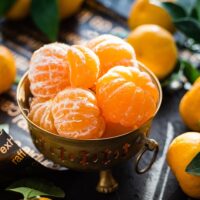In a world where screens are ever-present—from phones to tablets to televisions—it’s no surprise that they have become regular companions at mealtime.
Whether it’s scrolling through social media, catching up on emails, or binge-watching a favorite show, many of us eat while distracted by screens.
Yes, I too, am guilty of this at times. 
Unfortunately, this habit of distracted eating can lead to overeating, poor digestion, binge eating, or emotional eating.
But what if you could improve your eating habits, digestion, and overall health by simply tuning into your food and turning off the screens? That’s where mindful and intuitive eating come into play.
The Problem with Screens at Mealtime
Screens grab our attention. When we focus on what’s happening on a screen rather than what’s on our plate, we disconnect from our body’s natural hunger and fullness cues. This often results in eating past the point of satiety because we’re not paying attention to how our body feels.
Additionally, what we consume on screens may influence how we eat. Watching stressful news, intense dramas, or emotionally charged content can trigger emotional eating—a response to feelings rather than actual hunger. Instead of listening to our bodies, we may seek comfort in food, which can lead to overeating or making less healthy choices.
Mindful and Intuitive Eating: The Solution
Mindful eating is the practice of paying full attention to your eating experience—the taste, texture, smell, and even the appearance of your food. It involves slowing down and truly savoring each bite, which can make meals more enjoyable and satisfying.
Intuitive eating takes it a step further by encouraging you to listen to your body’s internal cues about when to eat and when to stop. This approach helps you recognize the difference between hunger and emotional cravings, guiding you to make better food choices naturally.
Tips for Practicing Mindful Eating
- Turn Off Screens During Meals: Create a screen-free zone at the table. This simple step can make a significant difference in your awareness while eating.
- Start with a Couple of Deep Breaths. It slows your nervous system and brings your focus to the present moment.
- Eat Slowly: Take your time to chew each bite thoroughly. Not only does this improve digestion, but it also gives your brain time to register when you’re full.
- Pause and Check In: Throughout your meal, pause and ask yourself how hungry or full you feel. This helps you stay connected to your body’s signals.
- Focus on the Senses: Pay attention to the colors, smells, textures, and flavors of your food. Engaging your senses makes eating a more enjoyable experience and helps you feel more satisfied.
- Avoid Multitasking: Try to eat without doing anything else. This means no working, no scrolling, and no TV—just you, your meal, and perhaps other people.
Benefits of Mindful and Intuitive Eating
By adopting these habits, you may notice a range of positive changes: better digestion, greater enjoyment of food, portion control, reduced emotional or binge eating. 
How to Get Started
If going completely screen-free during meals sounds daunting, start small. Try setting aside just one screen-free meal a day. Over time, this can become a healthy habit.
Consider creating a simple mealtime ritual to make the experience more enjoyable. Ideas: ambient lighting, a gratitude prayer, outdoor view. Small actions like these can help you slow down and appreciate your meal.
Mindful and intuitive eating don’t require drastic changes to your diet. Instead, they offer a way to enhance your relationship with food by encouraging you to slow down, savor, and listen to your body. By simply turning off the screens and tuning in to your eating experience, you may find that you naturally eat less, enjoy food more, and feel better overall.
Much love,
Health Coach Carol
“Even if you can’t be totally mindful at every meal, if you can say a blessing, silently if necessary, or offer up a prayer for someone, something beyond yourself and your food, the prayer helps to transform eating into something that affects not only our hunger at that moment but the greater world.” — Mary DeTurris Poust








